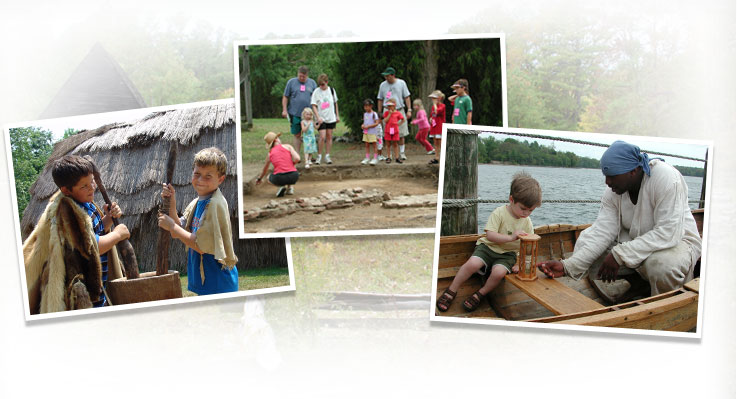Godiah Spray Tobacco Plantation
The Godiah Spray Tobacco Plantation at Historic St. Mary’s City is a re-creation of a typical 17th-century plantation. The plantation, its structures, fields, livestock, and inhabitants represent life in the year 1667. Although the Spray family is fictitious, their lives are based on a true Maryland planter, Robert Cole, and his family. Records including Cole’s will and inventory have provided considerable detail about everyday life on a Maryland tobacco plantation.

The economic opportunity offered by the cultivation of tobacco as the primary cash crop was one of the most significant reasons people came to Maryland. Early tobacco plantations were located close to navigable water which provided a means of shipping the tobacco to England and receiving, in exchange, manufactured goods from England and/or other places. Nearly all time on plantations had to be spent in activities which either directly or indirectly supported the cultivation of tobacco, so it made little sense to make what could be bought.
In the early years of the colony, there were few enslaved people. The financial investment was greater than contracting for an indentured servant but the risk of an early death was the same for both. Consequently, it seemed wiser to use indentured servants-as long as a sufficient supply of labor was available from England and Europe. Later in the century, as that labor pool shrank, the investment in enslaved labor from Africa and the Caribbean became more common, and by the 18th century, enslaved workers outnumbered indentured servants.


